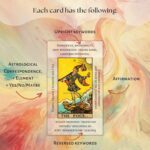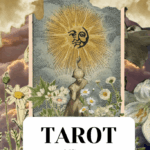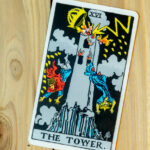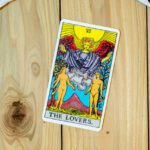The Thoth Tarot deck, designed by the enigmatic Aleister Crowley and illustrated by Lady Frieda Harris, has captivated tarot enthusiasts and occult practitioners for decades. Its rich symbolism and intricate imagery not only enchant but also invite deep introspection. Each card in this deck is layered with meaning, provoking thoughtful consideration about one’s life journey and spiritual path. Are you ready to explore the various facets of these cards, or do you find yourself intimidated by their complexity? Embracing the challenge of understanding the nuances of Thoth Tarot could unlock profound insights into your own experience.
Before delving into the meanings of specific cards, it’s important to recognize the foundational aspects of the Thoth Tarot. This deck is grounded in the principles of astrology, Kabbalah, and alchemy. Crowley used a unique blend of ancient wisdom and modern thought, aiming to provide a cosmic perspective on the human experience. Each card acts as a mirror, reflecting the querent’s inner psyche and the universal forces at play in their lives. The intricate designs and vibrant colors beckon the viewer to look beyond the surface, into a deeper realm of symbolism and significance.
One of the quintessential elements of the Thoth Tarot is the Major Arcana, which consists of 22 cards representing pivotal archetypes and life lessons. These cards embody significant life events, embodying themes such as transformation, enlightenment, and emotional turmoil. From The Fool to The World, each card encapsulates a profound truth about our existence. The challenge lies in traversing through these archetypal energies and recognizing how they resonate with one’s personal journey.
Consider The Fool, numbered 0, which signifies new beginnings and untapped potential. It invites the querent to embark on a journey of exploration and unlearning. Could you find the courage to leap into the unknown, or does the fear of uncertainty hold you back? The challenge here is to embrace spontaneity while maintaining a grounded sense of awareness.
Next, we encounter The Magus, or The Magician, positioned as card number I. This figure epitomizes manifestation and mastery. With the pivotal elements of air, water, earth, and fire at his disposal, he encourages the querent to harness their willpower and creative energy. How effectively do you channel your skills and resources in pursuit of your goals? The propensity for distraction can dilute one’s potential, yet the Magus insists that concentration and intention can yield miraculous outcomes.
As we progress through the Major Arcana, a deeper layer unfolds with The High Priestess (card II). She embodies intuition and the subconscious realm. This card urges you to trust your inner voice amidst the chaos of external influences. Are you able to quiet your mind to listen to your intuition, or do you find yourself swayed by the cacophony of advice from others? The challenge is to discern the whispers of your soul from the clamor of societal expectations.
In contrast, The Emperor, appearing as card IV, presents a counterbalance to the fluidity of the Priestess. He signifies structure, authority, and control. The challenge here is twofold: how do you construct a sense of order in your life without stifling the creativity that The Fool embodies? Striking a balance between discipline and spontaneity can lead to a harmonious existence.
Transitioning to the Minor Arcana, we discover the intricate suit representations. Each suit corresponds to a specific element and aspect of life: Wands (fire), Cups (water), Swords (air), and Disks (earth). These suits delve into more granular details of daily experiences, emotions, and challenges.
For instance, Wands encapsulate passion and inspiration. The Ace of Wands symbolizes the spark of creative energy, a potent reminder that new ventures require courage and initiative. The inquiry here is whether you are igniting your creative fires or allowing them to smolder. How do you cultivate your passions amidst the daily grind?
Conversely, Cups explore the realm of emotions and relationships. The Two of Cups signifies partnerships and harmonious unions. It serves as a gentle reminder of the nurturing bonds we forge. Do you invest time into cultivating meaningful connections, or do you find yourself retreating into solitude? The challenge lies in fostering vulnerability and acceptance within relationships.
Swords delve into the realm of intellect and conflict. The Three of Swords can indicate heartbreak or disappointment. Are you equipped to confront the shadows of your past, or do you shy away from the pain? Embracing sorrow can be a pathway to healing, though it requires one to face uncomfortable truths.
Lastly, Disks reflect material concerns and stability. The Ten of Disks embodies wealth and legacy. What kind of legacy do you wish to leave behind, and how can your current choices steer you toward that vision? The challenge here is maintaining a balance between material pursuits and spiritual growth.
In conclusion, the Thoth Tarot serves as an evocative tool for contemplation, inviting individuals to engage with the complexities of their lives and psyches. Each card presents an opportunity for introspection, challenging you to confront your fears, embrace new beginnings, and take charge of your destiny. The interplay of light and shadow within the deck acts as a reminder that both are integral to the human experience. Are you ready to embark on this journey of self-discovery and transcendence through the lens of the Thoth Tarot? The challenge awaits you, and the rewards can be transformative.









Leave a Comment